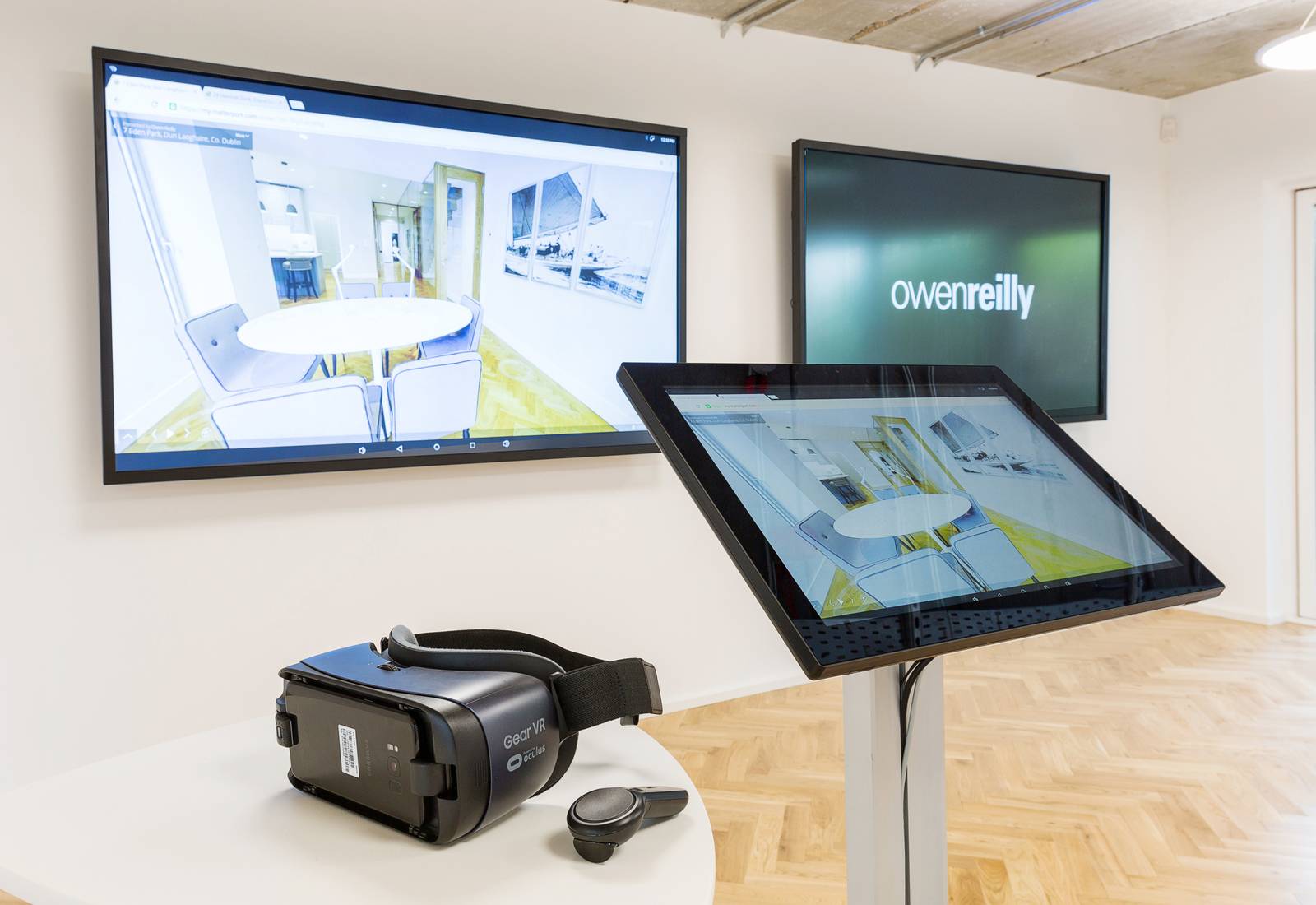Reach
You can reach any buyer or tenant anywhere in the world using virtual reality. For example last year we sold a penthouse in Dublin Docklands to a New Zealand based buyer who relied exclusively on the VR tour to make the buying decision. VR tours can be used on desktop or mobile from our website. You don’t need headgear to have an enhanced experience. It is the next best thing to being there yourself. And all the property portals use them now.
From a developer’s perspective, the entire residential sales process is based on buyers who visit the marketing suite or show units. While that can be very effective, marketing suites are not open 24/7, you can’t visit them any time you like. For buyers from a distance, it will be more difficult to visit the show units. Think of foreign buyers, they rarely will travel all the way to visit the marketing suite. How do you reach them? A key advantage VR offers is that because they’re digital, they’re accessible 24/7 and from anywhere in the world on the home computer or mobile device. (We send parents links to our properties buying for their children which gives them more confidence and Irish buyers overseas)
From our VR marketing suite we can set up any sales campaign quickly and we can sell different projects simultaneously. Using our large screens we can pitch a number of buyers at the same time.
Saves times
Regularly estate agents will drive 30 minutes to show a house on a Saturday to someone who knows after two minutes this is not what they are looking for. This is totally inefficient. We regularly email links on our VR tours to customers before they view and check out the garden/view/condition. They can also send to other decision-makers.
Anyone who’s had a virtual look beforehand will have an idea already and know what to look for while there, and afterwards won’t have to revisit. This, in turn, will speed up their decision-making process and therefore save the buyer and seller a lot of time. This also applies to marketing suites/show units.
Measure
One of the key problems of conventional property marketing is that it is very difficult to measure it particularly print media. Digital by nature, VR can be easily integrated into any digital marketing campaign which in turn is very easy to measure using analytics tools such as Google Analytics. With analytics, it is easy to track the amount of traffic but also origin and engagement. This is extremely useful in assessing return on investment for digital marketing.
In my opinion, the Irish property industry is lagging when it comes to leveraging digital marketing. We notice buyers are checking out our tours on our website and myhome.ie and daft.ie a lot!
Experience
Most conventional property marketing tools will only provide a limited experience and don’t give you an idea about how it will be like to live in that space. VR solutions offer a key advantage when it comes to providing that immersive and mobile experience. Personalisation is very important and through changing views, angles, daylight, colours, materials or even furniture is easily possible in VR. Feeling the depth of space, ceiling height and most importantly getting a sense of the aspect or view in the new home will intensify the experience especially when using VR goggles.
Engagement
What drives online traffic or engagement is content. VR provides the most relevant content: experience. It’s social media friendly and can be easily integrated into digital marketing campaigns. Enhanced engagement will enable developers to better understand homebuyers’ or investors preferences and improve customer relationship which in turn will enable developers to build developments that sell faster and/or at a premium.
Link to our video on VR marketing here.




